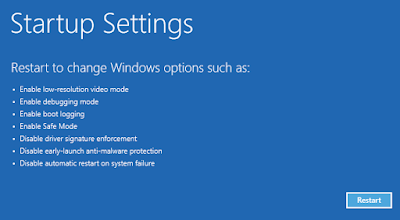EV ransomware
Remove EV ransomware from Windows 7
EV ransomware is responsible for causing these errors too! 0x8024502D WU_E_PT_SAME_REDIR_ID Windows Update Agent failed to download a redirector cabinet file with a new redirectorId value from the server during the recovery., 0x0000003E, 0x000000F3, 0x8024A004 WU_E_AU_PAUSED Automatic Updates was unable to process incoming requests because it was paused., 0x0000000A, 0x80246003 WU_E_DM_UNKNOWNALGORITHM A download manager operation could not be completed because the file metadata requested an unrecognized hash algorithm., 0x8024402C WU_E_PT_WINHTTP_NAME_NOT_RESOLVED Same as ERROR_WINHTTP_NAME_NOT_RESOLVED - the proxy server or target server name cannot be resolved., 0x00000049, 0x00000093, Error 0x80246007, 0x80246001 WU_E_DM_URLNOTAVAILABLE A download manager operation could not be completed because the requested file does not have a URL., 0xf0807 CBS_E_NOT_INSTALLABLE the component referenced is not separately installable, 0x00000070, 0xf0806CBS_E_PENDING the operation could not be complete due to locked resourcesEasy Steps To Delete EV ransomware From Infected Operating System
EV ransomware is detected as a perilous Operating System threat which can harm your Operating System data and files very badly. It intrudes your Operating System silently and secretly so that you will not identify its presence easily and it can spread itself as much as possible. It can corrupt your data and make it inaccessible. Moreover, it can cause your Operating System to degrade its performance and applications to respond slowly.
You can infect your Operating System in many ways like when you open a spam email, visit some unknown and untrusted site, clicking malicious ads or pop-ups and many other ways. But one important method used by EV ransomware is bundling method in which it gets installed directly with the installation of free downloads. On its arrival into the system, it can almost disturbs the internal settings and functioning of the Operating System. Hence, if you find such malware into the Operating System, you need to Delete it.
Guide 1 : Do Away With EV ransomware From Firefox In Operating System
Guide 2 : Do Away With EV ransomware From Control Panel In Operating System
Guide 3 : Do Away With EV ransomware From Registry Entry In Operating System
Guide 4 : Do Away With EV ransomware From Task Manager In Operating System
Guide 5 : Guides To Start Operating System In Safe Mode
Simple Steps To Effectively Delete EV ransomware From Your Operating System
Guide 1 : Do Away With EV ransomware From Firefox In Operating System
From Internet Explorer -
- Click on Gear icon to open Tools menu in the Internet Explorer window.
- Click on Manage Add-ons option.
- Goto Toolbars and Extensions tab.
- Locate EV ransomware related add-ons - > Disable button.
- Click More information button and finally click on Delete button to completely Delete EV ransomware.

From Google Chrome -
- At first, launch the Google Chrome browser.
- Click on gear icon present in your browser to open Chrome menu.
- Click on Tools option.
- Click on Extension.
- Select all unwanted extensions.
- Click on trash bin icon to Delete EV ransomware.

From Mozilla Firefox -
- Click on the Menu icon present at the top right corner of the browser.
- Select Add-ons option.
- In the Add-ons window, choose the Extensions or Appearance panel.
- Select add-on related to EV ransomware which you want to Delete.
- Click the Remove button.
- Click Restart if it asks.

From Microsoft Edge -
- Click on More (...) icon and click Settings then.

- Now, select A specific page or pages under the Open with option.
- Again, select Custom option.
- Type the URL of the page you want to set as your browser's default homepage.

Guide 2 : Do Away With EV ransomware From Control Panel In Operating System
For Windows XP
- Click on Start button and click Control Panel.

- Select Add or Remove Programs option.

- Find and Delete EV ransomware related programs in the window that appears.

For Windows 7
- Press Window key present on the keyboard.

- Click Control Panel option from the menu.

- A Control Panel window appears from where click on Programs option.

- Select executable file of EV ransomware.
- Click on Uninstall option.

For Windows 8
- Open run box by pressing Window+R keys together.

- Type control panel and hit Enter key.

- Click on Delete a Program.

- Then select all the programs related to EV ransomware.
- Click Uninstall option.

For Windows 10
- Click on Start button.
- Select Settings option present in the bottom left corner of the screen.

- Select System option under Setting.

- Click on App & Features option.

- Now, Delete all the unwanted program.

Guide 3 : Do Away With EV ransomware From Registry Entry In Operating System
- Press 'Windows+R' keys to open Run box.
- Type 'regedit' in the box and click OK button.

- Find out Delete all the registry files related to EV ransomware.
HKEY_LOCAL_MACHINEOperating SystemCurrentControlSetServicesWpm
HKEY_CURRENT_USERSoftwareMicrosoftInternet ExplorerMain “Default_Page_URL”
HKEY_LOCAL_Machine\Software\ClassesEV ransomware
HKEY_CURRENT_USER\Software\Microsoft\Windows\CurrentVersion\Run “.exe”
HKCU\Software\Microsoft\Windows\CurrentVersion\Internet Settings\random
HKEY_LOCAL_MACHINE\SOFTWARE\Microsoft\Windows\CurrentVersion\run\random
HKEY_CURRENT_USER\Software\Microsoft\Windows\CurrentVersion\Internet Settings “CertificateRevocation” = ’0
Guide 4 : Do Away With EV ransomware From Task Manager In Operating System
- Press Alt + Ctrl + Delete keys altogether to open task manager.

- In the window, click on Process tab.
- Select the unwanted processes running.

- Click on End Process.
Guide 5 : Steps To Start Operating System In Safe Mode
In windows XP/Vista/7 -
- Click on Start icon.
- Place the mouse on Shutdown button and then click on Restart button.

- Keep pressing F8 button when the Operating System starts booting-up.
- Select 'Advance boot menu' present on the screen.

- Select 'Safe Mode With Networking' option and press Enter key.

In windows 8/10 -
- Click on Start button and press Shift key at the same time.

- Click on Restart button and click Troubleshoot option.

- Click on 'Advanced option' -> Startup Settings.

- Choose 'Enable Safe Mode' option from the given list and click on Restart.

- Press F5 button to choose 'Safe Mode With Networking' mode.


No comments:
Post a Comment